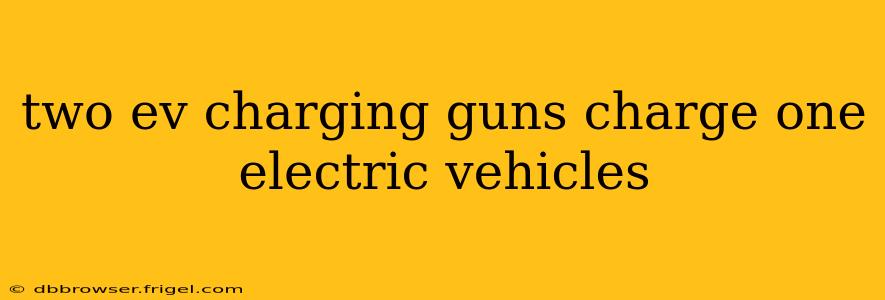The short answer is no, you cannot effectively charge an electric vehicle (EV) using two EV charging guns simultaneously. While the idea might seem appealing – doubling the charging speed – the reality is more nuanced and involves both the vehicle's onboard charging system and the charging station's design.
How EV Charging Works
Before diving into the specifics, let's understand how EV charging operates. The process involves transferring electricity from the charging station to the EV's battery through a charging cable and connector (the "gun"). The car's onboard charger manages the electricity flow, converting AC power (from most home outlets and public chargers) to DC power (used by the battery). This conversion process is limited by the car's maximum charging rate, expressed in kilowatts (kW).
Why Using Two Charging Guns Doesn't Work
Most EVs are designed with a single charging inlet. This inlet is connected to the onboard charger, which has a specific power handling capacity. Connecting two charging guns to a single inlet would likely cause a short circuit or other damage to the charging system, potentially endangering the vehicle and the charging equipment. The car's system simply isn't designed to handle the dual input.
Furthermore, even if physically possible (which it's not for most EVs), the charging system would still be limited by the car's onboard charger's maximum kW rating. Attempting to force more power through would not increase charging speed but could, again, damage the system.
What About Different Charging Levels?
The question sometimes arises regarding different charging levels (Level 1, Level 2, and DC Fast Charging). Using two Level 2 chargers simultaneously won't work for the reasons stated above. The charging level refers to the power delivery method and speed, not a method to bypass the car's inherent charging limitations.
Level 1 Charging:
This uses a standard household outlet and provides the slowest charging rate.
Level 2 Charging:
This utilizes a dedicated EV charging station with a higher voltage and amperage, resulting in faster charging.
DC Fast Charging:
This employs high-voltage DC power, enabling the fastest charging speeds, often available at public charging stations. Again, only one DC fast charger can be used at a time.
What if I need to charge faster?
If you need faster charging, your options are:
- Upgrade to a higher-powered Level 2 charger: This will only increase charging speed if your EV's onboard charger can handle the increased power.
- Use a DC fast charger: DC fast chargers offer the quickest charging speeds for compatible EVs.
- Consider a vehicle with a higher kW charging rate: When buying a new EV, check the car's maximum charging capacity (kW) to find one that meets your needs.
In conclusion, attempting to charge an EV with two charging guns simultaneously is not feasible and could damage your vehicle. Focus instead on utilizing the appropriate charging level and infrastructure for your specific EV model to achieve optimal charging speeds.
